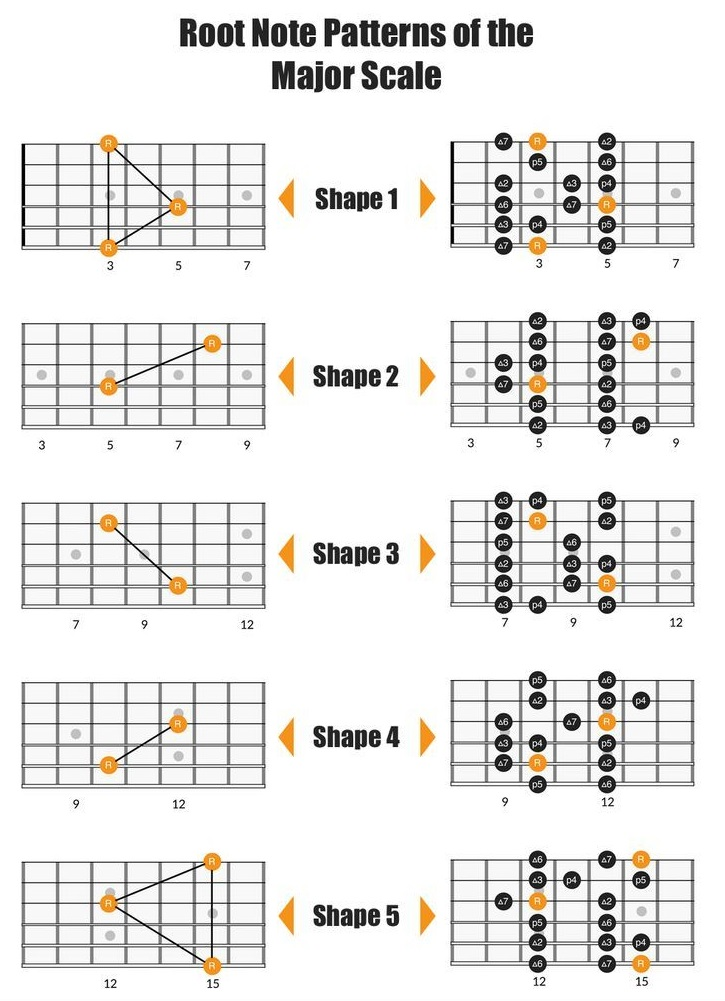When learning the major scale, one of the most important things to understand is the root note. This is the note that gives the scale its name. For example, in the C major scale, the root note is C. In the G major scale, the root note is G. It’s where everything starts!
Finding the Root Note
On a guitar, the root note can be found in several positions across the fretboard. The two main places to look are on the 6th string and the 5th string.


6th String Root
For scales like E, F, G, and A major, the root note can be found on the 6th string (the thickest string). To find the pattern, simply play the major scale starting from this note.
5th String Root
If you’re playing scales like D, C, or B major, the root note is usually on the 5th string. Once you find the root, follow the major scale pattern up the neck.
Practice Root Patterns
Start with one root note on either the 6th or 5th string. Practice the major scale in this position until you feel comfortable. Then, move the same pattern to a different root note to practice other scales.
Why It Matters
Understanding where the root note is located helps you know where to start your scale. It makes finding and playing different major scales on the guitar much easier. As you continue to practice, you’ll also be able to shift scales more fluidly across the fretboard!
Take your time with these root note patterns, and soon, you’ll be moving around the major scale with ease. Happy playing!
- July 5th in America: The Quiet Day After the Boom
- Who Is Vanessa Trump? Inside the Life of Donald Trump Jr.’s Former Wife
- Remembering Steve McNair 16 Years Since the Titans Legend’s Tragic Passing
- Is Guitar Center Open on 4th of July? Here’s What You Need to Know
- Unlocking Style Core Aesthetics: The New Era of Personal Fashion

